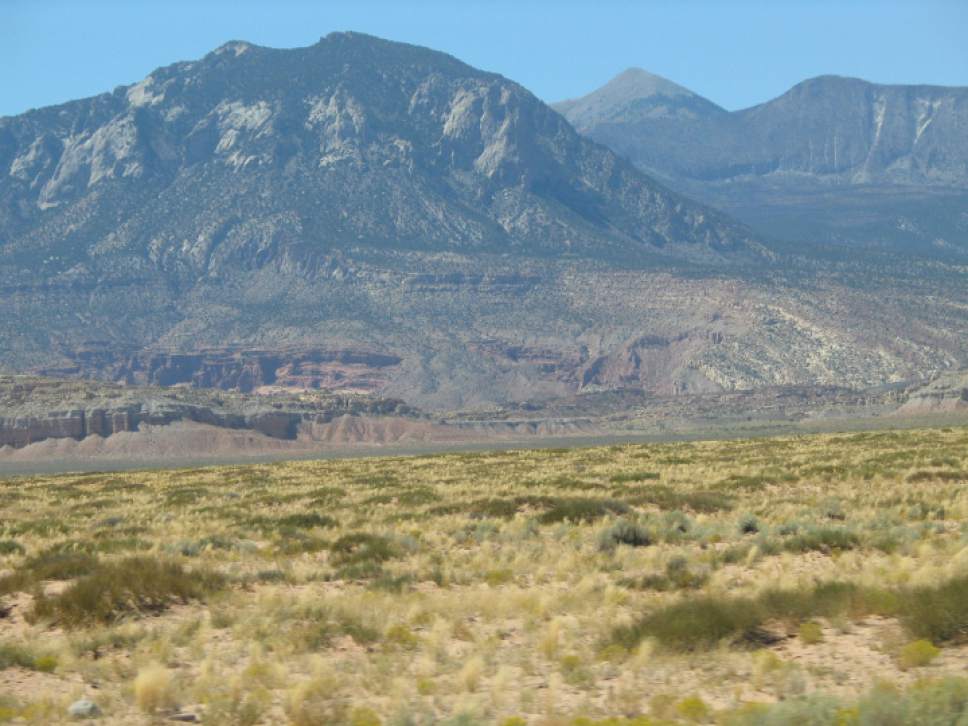This is an archived article that was published on sltrib.com in 2017, and information in the article may be outdated. It is provided only for personal research purposes and may not be reprinted.
Over objections lodged by several Utah counties, the 10th Circuit Court of Appeals on Wednesday signed off on a settlement the Bureau of Land Management negotiated with several environmental groups to resolve a tangle of lawsuits over off-road motorized access in six southeastern Utah resource management areas.
Utah argued the settlement would undermine counties' claims to 3,000 routes now under litigation, but U.S. District Judge Dale Kimball concluded the settlement would not affect the counties' interests, calling it "a fair and lawful resolution of years of litigation." The environmental groups had opposed travel plans, adopted in 2008, because they authorized extensive networks of motorized routes totaling 20,000 miles, and now the BLM has agreed to reevaluate them.
"The intervening parties who filed oppositions to the proposed settlement agreement in this case have asserted several objections but have not demonstrated that the proposed settlement is unlawful, a product of collusion, or against the public interest," Kimball wrote in an April 26 order.
Nor does the proposed settlement affect county claims to road rights-of-way filed under R.S. 2477 "or other valid existing rights," Kimball concluded.
The state and counties intervened in the suit brought by the Southern Utah Wilderness Alliance and its allies, which argued the BLM had merely rubber stamped the counties' motorized access plans across 6 million acres of public lands without conducting required surveys of cultural sites or taking steps to minimize these routes impacts.
While the counties vigorously disputed the settlement's legitimacy, other intervening parties, including OHV groups, energy companies and the Utah School and Trust Lands Administration, either signed off on the deal or did not oppose it.
The settlement sets an eight-year time frame for reviewing 13 travel planning areas covering about 10,000 miles of routes, or half the total approved under the disputed resource management plans. The decree also includes new criteria for deciding whether routes should remain open to motorized use or modified to minimize impacts — criteria that includes whether they run through lands with wilderness characteristics, and that makes Utah officials nervous.
The state Attorney General's Office argued the review would be imposed on the counties against their will and could jeopardize historic road claims. Re-examining the routes would be detrimental to these counties' residents who depend on access to public lands for their livelihoods and recreation, state attorneys argued.
"The settlement creates a new regime that is designed to limit access and close travel routes," the Attorney General's office wrote in a brief filed in February, asking Kimball to reject the settlement, which covers the BLM's Kanab, Moab, Monticello, Richfield, Vernal and Price field offices.
In its filings, however, the Interior Department noted that the settlement does not close routes or require a process designed to shut down routes.
"In fact, the settlement does not require that BLM change any decisions made in the 2008 travel plans," Interior lawyers wrote. "Rather, it would allow for changes to route networks only after an open and fair public process, and any changes would be completely within BLM's discretion."
Utah officials have yet to decide their next steps or if they will appeal.
"We are evaluating what we can do," said Tony Rampton, the Attorney General's point man on public lands.
Now comes the hard work of reviewing the 13 travel areas, starting with Fremont Gorge, Henry Mountains and San Rafael Desert.
"We know the last time around that they did not go on the ground and do the work they will have to do now," said SUWA legal director Stephen Bloch. "The plans were all heavily weighted in favor of motorized use and it is our hope the agreements lays out a framework that is open and transparent and result in better decisions with trail designations that reflect lands with wildfires character and cultural resources."
Brian Maffly covers public lands for The Salt Lake Tribune. Brian Maffly can be reached at bmaffly@sltrib.com or 801-257-8713.
Twitter: @brianmaffly





